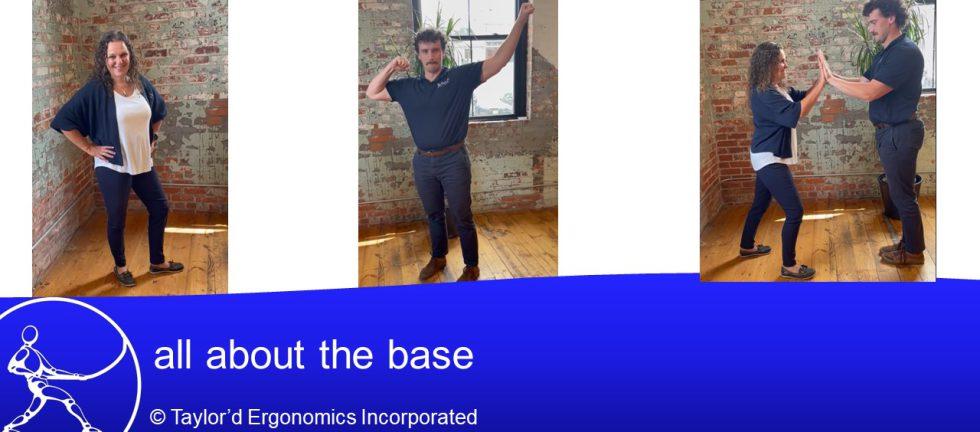If you’re trying to get people engaged in your training, I’ll let you in on a little secret. People get really excited about playing familiar games. In fact, people love interactive games! Games can also be effective in teaching workers to use specific ergonomic work strategies. One of our ergo contests used the theme of the “rhino and the beetle”, with a series of activities aimed at giving a smaller person a biomechanical advantage over a larger person. “Who doesn’t love it when the underdog wins?” says the 5’ 3” ergonomist.
We’re working on converting our activity-based employee ergo training into a games-based program. It will still meet the expectations of “training” – participants will learn to use ergonomic work practices. But it will feel like an hour of playing a throwback game – Jenga, Operation, Kerplunk, or Trouble. How does ergonomics affect your performance while playing Jenga? Do you perform better or worse, when the blocks are on the floor? If your reach is obstructed, is the game harder? Our goal is to ensure that participants learn the techniques, and why they work, and make the connections to how these techniques apply in their workplace.
Let’s go back to the rhino and the beetle.
We recently made 3 little videos for our social media platforms, based on the activities in that contest. I’m sharing one of them today. Let’s think about how you could use the rhino and beetle activity to teach a specific ergonomic work strategy. Our team plans to create libraries of lesson plans like these, so this example is really just a “teaser”.
All about the base
This activity demonstrates the importance of foot placement when exerting forces. A staggered stance offers a larger, more stable base of support. So we say, “It’s all about the base.”
In this activity, the larger and presumably stronger person is asked to stand with the ankles together, creating a small base of support. The smaller person can use a staggered stance. The two people face each other, each trying to push the other over. I don’t want to spoil the surprise, but the ergo work strategy works!
Here is the very short video that shows how the activity works: https://youtube.com/shorts/ZM9QfU0kCGU?feature=share
Why does this work? We went the next step and used a gauge to measure how much strength our beetle and rhino had in those positions. The beetle, with the stronger base of support (that would be me) was able to push with 26 kg of force. (https://youtube.com/shorts/ry97BAKIEgM?feature=share)
The rhino with the small base of support (Aaron, with his ankles together) was only able to push with 17.5 kg of force. (https://youtube.com/shorts/zZWFJODw-j4?feature=share)
So, it makes sense that I would be able to push Aaron off balance easily, even though he is much bigger and stronger than me. I had more strength in this position. This approach could be used to explore the effect of anti-slip footwear, too. And similar rhino and beetle contests can also explore the effects of gloves, pushing direction, pushing heights, and more.
Where does “all about the base” apply in the workplace? Workers who use landscaping tools such as pole saws and trimmers were the first to point it out to us, but it applies to many push, pull, or lift tasks. Because the “all about the base” activity involves pushing, the more natural workplace applications would be those that involve pushing or pulling. A staggered, large base of support should be promoted for wrenching, moving heavy carts or stretchers, mopping, rotating pallets on turntables, and patient transfers. It will also help your team win that game of tug-of-war at the family picnic.


